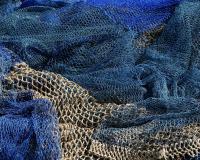
Vibrant Environment
All
All | Biodiversity | Climate Change and Sustainability | Environmental Justice | Governance and Rule of Law | Land Use and Natural Resources | Oceans and Coasts | Pollution Control

Despite advances in environmental law in recent decades, issues with implementation and enforcement continue to impede environmental progress worldwide. This is especially true in the case of illegal, unreported, and unregulated (IUU) fishing. Because IUU fishing is nomadic and international, detecting and penalizing perpetrators can be difficult, if not impossible. Organized, transnational groups are increasingly turning to illegal fishing, whether to produce income, fund their networks, or conceal trafficking of drugs and people on their ships. Government—such as through customs or ports—likewise plays a large role in facilitating and concealing these illegal activities.
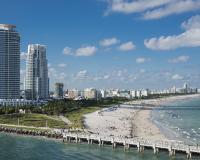
Around 40% of people in the United States live on the coast. This means over 127 million people live in regions where the future of public health and safety, housing and job security, and environmental stability is threatened by coastal impacts of climate change. According to the U.S. Global Change’s Fourth National Climate Assessment, coastal cities will likely face a number of climate-related challenges before the end of the century, including sea-level rise, which would threaten property and infrastructure, degrade important ecological systems, and exacerbate social inequalities.

Around 40% of people in the United States live on the coast. This means over 127 million people live in regions where the future of public health and safety, housing and job security, and environmental stability is threatened by coastal impacts of climate change. According to the U.S. Global Change’s Fourth National Climate Assessment, coastal cities will likely face a number of climate-related challenges before the end of the century, including sea-level rise, which would threaten property and infrastructure, degrade important ecological systems, and exacerbate social inequalities.
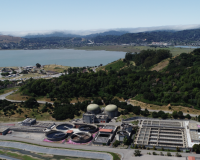
An estimated 35% of food that is produced is uneaten, with losses occurring along the supply chain from farms to consumers. The majority from non-industrial sources ends up decomposing in landfills, where it releases methane, a powerful greenhouse gas (GHG). Recycling food waste through anaerobic digestion (AD), in which bacteria break down organic material in the absence of oxygen and create biogas, can create a triple-win for GHG mitigation.

An estimated 35% of food that is produced is uneaten, with losses occurring along the supply chain from farms to consumers. The majority from non-industrial sources ends up decomposing in landfills, where it releases methane, a powerful greenhouse gas (GHG). Recycling food waste through anaerobic digestion (AD), in which bacteria break down organic material in the absence of oxygen and create biogas, can create a triple-win for GHG mitigation.
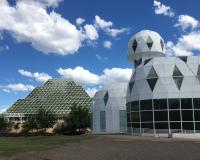
When it comes to the climate crisis, some say we can innovate our way out. In his 1989 essay The End of Nature, the writer Bill McKibben mused: “We may well be able to create a world that can support our numbers and our habits, but it will be an artificial world — a space station.”

Environmental justice (EJ) in federal policy to date has mostly involved conducting more public participation—a “process without substance,” as EJ pioneer Charles Lee puts it. In this month’s issue of ELR—The Environmental Law Reporter, Lee offers a road map for government agencies to effectively address EJ issues by developing an understanding of disproportionate impacts based on rigorous, holistic data, and operationalizing this analysis with a spectrum of policy actions.
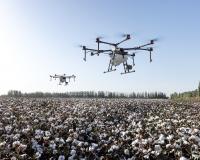
The agricultural industry is developing fast. With new and emerging technologies on the rise, industrial agriculture continually strives to incorporate sustainability and efficiency into its operations. Although the industry produces significant pollutants, including animal waste, chemical fertilizers, pesticides, and other agricultural inputs and byproducts, incorporating new technologies, such as drones, helps to mitigate the hazardous pollutants associated with industrial agriculture. In addition to mitigating environmental harm, incorporating sustainable technology into agricultural practices can improve water conservation and bolster efficiency.

The agricultural industry is developing fast. With new and emerging technologies on the rise, industrial agriculture continually strives to incorporate sustainability and efficiency into its operations. Although the industry produces significant pollutants, including animal waste, chemical fertilizers, pesticides, and other agricultural inputs and byproducts, incorporating new technologies, such as drones, helps to mitigate the hazardous pollutants associated with industrial agriculture. In addition to mitigating environmental harm, incorporating sustainable technology into agricultural practices can improve water conservation and bolster efficiency.

The agricultural industry is developing fast. With new and emerging technologies on the rise, industrial agriculture continually strives to incorporate sustainability and efficiency into its operations. Although the industry produces significant pollutants, including animal waste, chemical fertilizers, pesticides, and other agricultural inputs and byproducts, incorporating new technologies, such as drones, helps to mitigate the hazardous pollutants associated with industrial agriculture. In addition to mitigating environmental harm, incorporating sustainable technology into agricultural practices can improve water conservation and bolster efficiency.